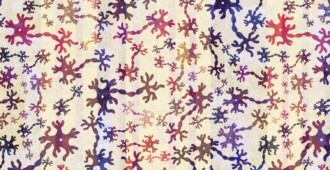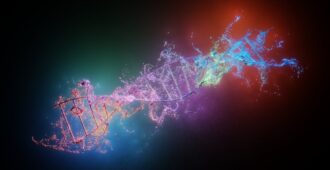Researchers can create human motor neurones exhibiting signs of MND in the lab by taking skin cells from a person living with MND and reprogramming them into motor neurones. This is called induced pluripotent stem cell (iPSC) technology and gives an ‘in a dish’ human model of MND. iPSCs are being used by several of the researchers we fund.

Dr Gareth Miles from the University of St Andrews, together with former PhD student Anna-Claire Devlin, has previously found that these ‘in a dish’ motor neurones lose their ability to produce an electrical nerve impulse. MND-affected motor neurones at first become overactive, and then subsequently lose their ability to produce the impulses needed to make muscles contract.
In his new project Dr Miles and PhD student Amit Chouhan, alongside Prof Siddharthan Chandran (University of Edinburgh), plans to use iPSCs to investigate why these electrical properties in nerve cells change in MND (our reference: 878-792).
The researchers will look at proteins called ‘ion channels’ that regulate the flow of electrical messages (called an action potential) which travel along the nerve cell towards the muscle.
During the course of Amit’s PhD research he hopes to determine which subtypes of ion channels in iPSC-derived nerve cells are affected in MND, and if the channel properties are changed or lost entirely.
By understanding the reasons why and how motor neurones lose their normal function, researchers can aim to design and develop new treatments that target this process.
At our International Symposium last year, Dr Miles was presented with the Instituto Paulo Gontijo IPG) award for International Young ALS Investigator. He was awarded this prize for his work on characterising changes in human motor neurones from iPSCs.
Throughout June 2016 MND Awareness Month will be highlighting the rapid progression of the disease in its powerful Shortened Stories campaign, sharing the experiences of people currently living with MND, or who have lost loved ones to the disease, through art, poetry and film.





